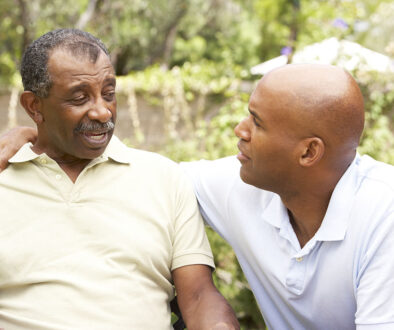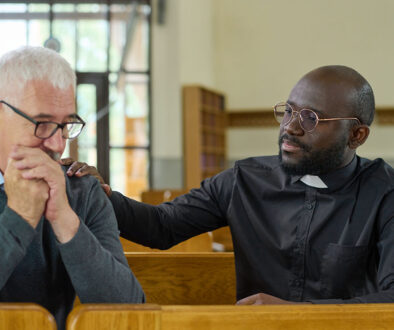The Intersection of Hospice and Parkinson’s Disease–The Care You Expect
At first, the changes may be subtle and difficult to notice.
While Parkinson’s disease gets progressively worse over time, in some individuals, this deterioration is gradual. During this phase, the patient may still be able to spend time with family, work, and engage in favorite activities.
However, despite the gradual onset, the disease’s impact will eventually intensify, making it essential to understand all aspects of hospice care for Parkinson’s disease.
“It’s devastating to watch someone you love gradually lose the ability to accomplish everyday tasks,” said Blaire Dawson, clinical director of Home Hospice. “It’s at times like these that we want you to know that our hospice services are always ready to help you. With our assistance, we can improve the quality of life for those with Parkinson’s disease. If you or someone you care about has this condition, we urge you to contact us today–many wished they had contacted hospice sooner.”
But what can you expect once someone with Parkinson’s disease enters care? We’ll take a closer look at hospice and Parkinson’s disease including what stage qualifies for hospice care and how the symptoms are managed.
What Stage of Parkinson’s Qualifies for Hospice Care?
End-stage Parkinson’s disease – Stage 4 or Stage 5 – is typically when a person can qualify for hospice care. Remember: to qualify for hospice, you should have a life expectancy of six months or less if the disease follows its natural course.
In Stages 4 and 5, symptoms are disabling, and the person needs significant help with everyday tasks such as dressing or bathing. In the latest stage, the person is often bedridden and needs around-the-clock care.
How Are Parkinson’s Disease Symptoms Managed in Hospice?
At 3HC, we want you to know that we treat the entire family. You are not alone. We’ll take you step by step through the process of how we help your loved one manage the symptoms of Parkinson’s disease.
First, after you have officially been admitted to hospice, we’ll conduct an assessment with members of the entire hospice team. This allows us to communicate with your doctors and healthcare team smoothly and efficiently. From there, we’ll follow your care plan.
Following are some symptoms and how we manage them at 3HC:
Chronic pain
We always strive to keep your loved one as comfortable as possible, and we’ll use appropriate medications that provide both relief and an improved quality of life. We want you to be able to spend time with your loved one, and a large part of that is made possible by controlling pain symptoms.
Managing tremors and other motor symptoms
We can adjust the medications to address issues of rigidity and tremors. Because we adopt a team approach, we’ll also carefully monitor your loved one for side effects. We can even provide assistance with mobility by utilizing physical therapy to improve range of motion.
Swallowing assistance
Many individuals with Parkinson’s disease experience difficulty swallowing. We will collaborate with the primary care team to implement the necessary dietary changes to support the needs of your loved one.
Caregiver education
We will provide informative materials to help you understand the progression of Parkinson’s disease. Remember, we are always available to answer any of your questions. We pledge to take time to address your concerns.
Emotional and spiritual support
While 3HC is not religiously affiliated, we do have chaplains on our team who are available to speak with you or your loved one. We can also provide access to trained counselors who can help.
Grief support for the entire family
Our scope of caring walks with you through this difficult journey, providing resources and access to grief counseling.
When Faced With the Devastating Progression of Parkinson’s Disease, Let Our 3HC Family Help Your Family
We understand the heartbreak and challenges of Parkinson’s disease—and even more importantly, we know the importance of making every moment count. We enable you to spend more quality time with the ones you love the most.
Let us guide you through every step. We’ve heard so many say that they wish they had contacted hospice sooner. We urge you to reach out today to learn about how we can support you and your family.
The content within this article and others on this website is only for educational purposes and should not be considered as medical advice. For any questions or concerns, please consult with your healthcare provider.
=====
Sources:
American Parkinson Disease Association, “End-Stage Parkinson’s Disease & Risk of Death,” https://www.apdaparkinson.org/article/death-parkinsons-disease-3/
Katz M. Palliative Care for Parkinson’s Spectrum Disorders: an Emerging Approach. Neurotherapeutics. 2020 Oct;17(4):1456-1463. https://pmc.ncbi.nlm.nih.gov/articles/PMC7851259/#:~:text=End%2Dof%2DLife%20Care%20in,27%2C%2045%2C%2048%5D.
Parkinson’s Foundation, “What Is Parkinson’s? Stages,” https://www.parkinson.org/understanding-parkinsons/what-is-parkinsons/stages





